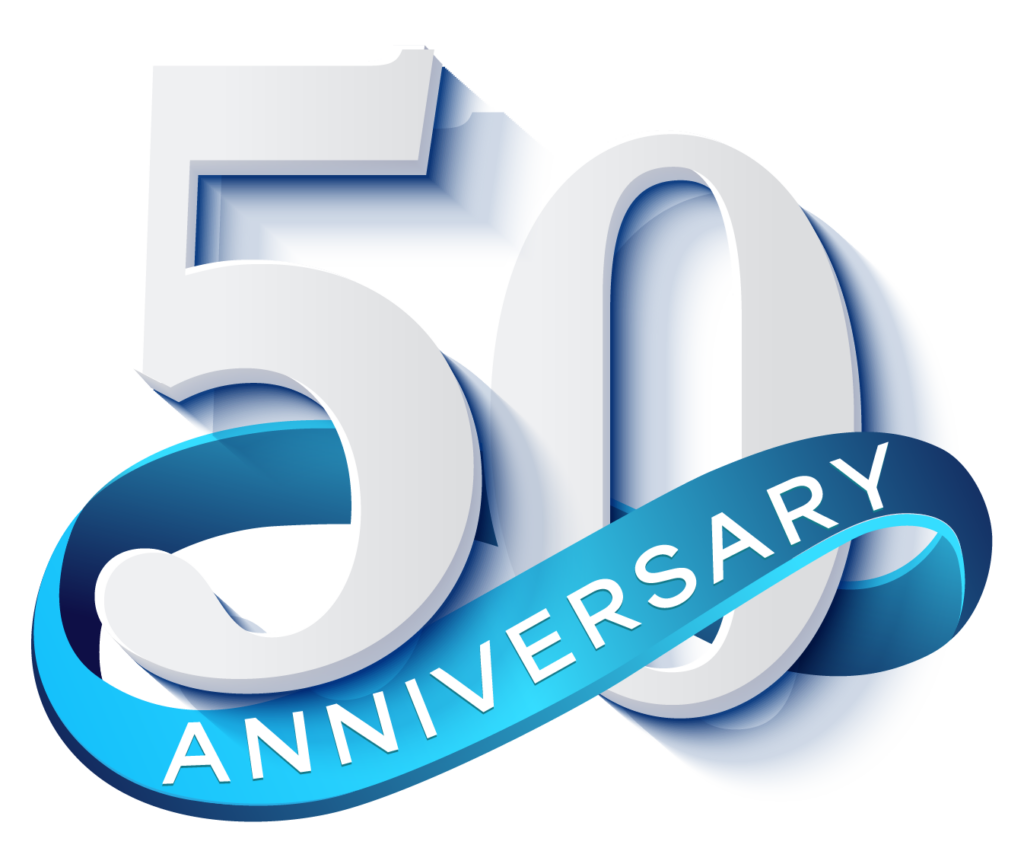Effective cross-functional collaboration is essential in today’s interconnected work environments, driving innovation and enabling organizations to tackle complex challenges. Success requires more than diverse skill sets; it demands clear goals, inclusive communication, trust, and the strategic use of collaborative tools.
In most use cases, science-based personality assessment tools like Personalysis further enhance cross-functional collaboration by offering insights into individual strengths, communication styles, and potential friction points, fostering trust and engagement.
Studies like that conducted by Gallup, underscores the value of such strategies, linking effective cross-functional collaboration to higher profitability and innovation, making intentional teamwork a cornerstone of organizational success. It was found that companies that excel in cross-functional collaboration are 18-23% more likely to achieve above-average profitability and innovation outcomes.
Schedule Your Free Consultation Today
Establish Clear Goals and Alignment
Setting clear goals and ensuring alignment across teams is critical for driving organizational success. When everyone understands the shared objectives and how their efforts contribute to achieving them, teams become more cohesive, efficient, and motivated. This process involves not just defining goals but also consistently communicating, tracking, and adjusting them as needed to maintain alignment.
Clearly Articulate Objectives
The foundation of goal-setting lies in clarity. Ambiguity leads to confusion, wasted effort, and missed opportunities. To create effective objectives, use the SMART framework, which ensures goals are:
- Specific: Clearly define what needs to be achieved to eliminate ambiguity.
- Measurable: Establish criteria to track progress and determine success.
- Achievable: Set realistic goals that challenge the team without being unattainable.
- Relevant: Align goals with broader organizational priorities to ensure meaningful contributions.
- Time-bound: Assign deadlines to maintain focus and urgency.
For example, instead of saying, “Improve customer satisfaction,” a SMART goal might be: “Increase customer satisfaction scores from 80% to 90% within the next six months through enhanced training and faster response times.” Regularly communicating these objectives ensures that every team member understands the desired outcomes and how their roles fit into the bigger picture.
Visualize Contributions
Visualizing contributions helps connect individual and team efforts to an organization’s overarching mission, fostering purpose and accountability. Tools like OKRs (Objectives and Key Results) are particularly effective, with Objectives representing high-level goals, such as “Enhance customer retention,” and Key Results providing measurable progress indicators, like “Increase repeat customer purchases by 15%.”
By clearly showing how individual work supports broader goals, employees feel motivated and integral to the company’s success. Visual dashboards or regular updates can further illustrate progress, reinforcing alignment and transparency.
Schedule Your Free Consultation Today
Regular Updates on Priorities
Alignment isn’t a one-time activity; it requires continuous effort to maintain. Priorities can shift due to market changes, new opportunities, or unexpected challenges, making regular updates essential. Agile frameworks are particularly effective for ensuring teams remain aligned:
- Daily Stand-ups: These brief meetings provide a forum for team members to share progress, highlight blockers, and adjust tasks as needed.
- Bi-Weekly Sprints: Breaking work into shorter intervals allows teams to focus on immediate priorities while maintaining the flexibility to pivot when necessary.
- Retrospectives: Reflecting on what went well and what can be improved helps teams stay on track and refine their processes.
These iterative methods foster cross-functional collaboration, ensure alignment on priorities, and promote a culture of continuous improvement. According to McKinsey & Company, organizations with strong alignment across teams are more than 10% more productive than their peers. This alignment also boosts employee satisfaction and retention.
Schedule Your Free Consultation Today
Improve Communication
Strong communication is essential for team success. It not only ensures the smooth flow of information but also fosters trust, collaboration, and efficiency.
Miscommunication, on the other hand, can lead to confusion, delays, and errors, significantly impacting team performance. Implementing structured and proactive communication strategies can strengthen team dynamics, enhance productivity, and minimize costly mistakes.
Structured Check-ins
Consistent and well-organized check-ins create a reliable framework for teams to stay connected, share updates, and address challenges. This regular cadence of communication helps maintain momentum and ensures everyone is aligned on priorities.
- Set a Schedule: Establish a predictable meeting rhythm, such as daily stand-ups, weekly check-ins, or monthly reviews, depending on the team’s needs and project scope.
- Use Meeting Agendas: Before each meeting, prepare and share an agenda outlining the topics to be discussed. This ensures meetings are focused and productive.
- Document Key Takeaways: Use meeting notes or action item trackers to document decisions, next steps, and deadlines. Sharing these notes keeps everyone on the same page and provides a reference point for accountability.
Structured check-ins are particularly valuable in preventing issues from slipping through the cracks, enabling teams to address roadblocks proactively and keep projects on track.
Schedule Your Free Consultation Today
Leverage Technology
Leveraging the right technology can significantly enhance team cross-functional collaboration and streamline workflows. Tools like Slack, Microsoft Teams, and Asana centralize communication, reduce email overload, and keep information accessible, preventing miscommunication. Project management platforms such as Trello and Monday.com also support asynchronous cross-functional collaboration, accommodating diverse schedules and time zones.
By integrating tools like linking Asana tasks to Slack or syncing calendars with Microsoft Teams, teams can work more efficiently and transparently. Investing in these technologies helps teams stay connected, track progress, and manage projects with greater ease and coordination.
Foster Psychological Safety
Fostering psychological safety is key to effective communication within teams, as it ensures members feel comfortable sharing ideas, asking questions, and addressing concerns without fear of criticism. Encouraging open dialogue, especially from quieter members, and responding constructively to feedback also serves to promote an inclusive environment. Leaders who model vulnerability by acknowledging their own mistakes can set a tone of transparency and learning, thus encouraging psychological safety.
2024 Pumble statistics revealed that 86% of workplace mistakes are tied to poor communication. It then becomes evident that investing in structured communication frameworks mitigates this risk. Recognizing and celebrating contributions may also serve to help team members feel valued and respected. This supportive environment boosts morale, enhances problem-solving, and encourages innovation, ultimately strengthening communication and cross-functional collaboration.
Schedule Your Free Consultation Today
Define Roles and Responsibilities
Defining clear roles and responsibilities within a team is essential for ensuring efficiency, minimizing conflicts, and driving successful outcomes. Without clarity, teams risk confusion, duplicated efforts, or overlooked tasks. By establishing a structured approach to assigning roles and regularly reviewing responsibilities, organizations can enhance cross-functional collaboration, boost accountability, and maintain focus on their objectives.
Ownership and Accountability
Ownership and accountability are key to ensuring tasks are completed effectively and on time. A structured approach, such as the RACI framework, is invaluable for delineating responsibilities:
- RACI (Responsible, Accountable, Consulted, Informed):
- Responsible: The person or people actively working on the task.
- Accountable: The individual is ultimately answerable for the task’s success.
- Consulted: Stakeholders whose input is needed for decision-making.
- Informed: Individuals who need to be updated on progress but are not directly involved.
For example, in a product launch, the marketing manager might be Responsible for creating a campaign, the VP of marketing is Accountable for its success, the sales team is Consulted for insights, and the CEO is Informed about results. By clearly defining these roles, teams can avoid confusion and ensure everyone knows their part in the process.
Onboarding to Roles
Effective onboarding goes beyond simply assigning roles; it ensures that team members fully understand their responsibilities and how their work contributes to the project’s success. During kickoff meetings or onboarding sessions, it’s essential to discuss each team member’s role in detail, outline expected deliverables, and explain how their work interacts with others.
Providing supporting resources like role descriptions and project plans helps set clear expectations while encouraging open dialogue and ensuring alignment and mutual understanding. Well-defined roles and clear communication from the start enable teams to begin projects with confidence and clarity.
Schedule Your Free Consultation Today
Monitor Role Overlap
Monitoring role overlap is crucial as projects evolve, ensuring that responsibilities stay aligned with current priorities. Regular role audits help assess whether team members’ tasks remain relevant and prevent duplication or gaps in coverage. When conflicts arise, such as multiple team members inadvertently owning the same task, addressing them early by revisiting the RACI matrix or adjusting workload distribution can prevent confusion.
Staying flexible and adapting roles to new tasks or changes in team dynamics promotes agility, ensuring teams remain efficient and focused even as priorities shift.
By providing deep insights into individual strengths, motivations, and working styles, Personalysis empowers teams to navigate differences, foster alignment with shared goals, and embrace proactive problem-solving. Whether your team operates in hybrid, virtual, or traditional environments, our approach drives inclusivity and strengthens collective effectiveness.
Schedule Your Free Consultation Today
Use the Right Tools and Technology
In today’s dynamic work environment, modern cross-functional collaboration tools have become indispensable for simplifying complex workflows, enabling seamless teamwork, and boosting productivity. These tools are designed to address the unique challenges of contemporary workplaces, such as distributed teams, overlapping projects, and fast-changing priorities. From task management to brainstorming, these solutions provide the structure and flexibility needed to adapt and thrive.
Let’s explore how these tools enhance teamwork and why their adoption is on the rise.
Project Management Tools
Project management tools like Trello, and Monday.com bring structure to even the most complex projects. They centralize workflows, making it easier for teams to manage tasks, set priorities, and monitor progress in real time.
- Task Assignments: Clearly define who is responsible for each task, avoiding confusion and ensuring accountability.
- Timelines and Deadlines: Use Gantt charts, Kanban boards, or calendars to visualize project timelines and keep deliverables on track.
- Progress Tracking: Real-time updates on task status provide transparency and help teams identify bottlenecks early.
These tools not only reduce the chaos of email chains and scattered updates but also improve efficiency by providing a single source of truth for all project-related activities.
Document Collaboration Tools
Platforms like Google Drive and Microsoft SharePoint have revolutionized how teams collaborate on documents, presentations, and spreadsheets. These tools enable real-time co-editing and ensure everyone is working on the most up-to-date version.
- Version Control: Changes are automatically saved, and version histories allow users to revert to earlier drafts if needed.
- Accessibility: Team members can access documents from anywhere, using any device, fostering productivity in remote or hybrid work setups.
- Commenting and Feedback: Built-in commenting features streamline the feedback process, reducing the need for separate email threads.
Document collaboration tools eliminate duplication of effort and enhance teamwork by enabling simultaneous contributions, even across different time zones.
Visual Workflow Tools
For brainstorming and planning, tools like Miro and Lucidspark are game changers. They provide virtual canvases that enable teams to map out ideas, workflows, and strategies visually.
- Brainstorming Sessions: Teams can collaborate in real-time, adding sticky notes, diagrams, and sketches to explore ideas.
- Workflow Design: Create flowcharts or process maps to visualize complex workflows, making them easier to understand and implement.
- Integration-Friendly: These tools often integrate with project management platforms, allowing seamless transitions from brainstorming to execution.
Visual workflows make abstract ideas tangible, fostering creativity and improving comprehension for all team members. A Gartner report predicts that by 2026, 90% of organizations will invest heavily in collaborative work management solutions to drive efficiency and agility.
Schedule Your Free Consultation Today
Foster an Inclusive Environment
An inclusive work environment doesn’t just foster harmony; it’s also a catalyst for innovation and resilience. When team members feel valued, respected, and heard, they’re more likely to contribute their unique ideas and perspectives. This diversity of thought drives creativity, fuels problem-solving, and enables organizations to adapt to change effectively. Let’s delve deeper into strategies for creating and sustaining an inclusive environment that benefits everyone.
Championing Ideas
Leaders play a pivotal role in fostering inclusivity by actively encouraging participation from all team members, especially those who may be hesitant to speak up. Creating structured opportunities, such as brainstorming sessions or round-robin discussions, ensures that every voice is heard. Leaders should also pay attention to nonverbal cues and invite quieter members to share their thoughts in smaller settings if necessary.
Recognizing and celebrating contributions from all team members helps ensure that everyone feels valued. By amplifying every voice, teams gain a richer pool of ideas and build a culture of mutual respect.
Diversity Programs
Effective diversity programs go beyond hiring practices. They also actively create opportunities for team members to learn from and collaborate with colleagues from different backgrounds.
- Mentorship Programs: Pair employees with mentors from diverse departments or backgrounds to promote cross-disciplinary learning and personal growth.
- Cross-Departmental Shadowing: Allow team members to spend time in other departments, gaining insights into different roles, perspectives, and challenges.
- Workshops and Panels: Organize events where diverse employees share their experiences, helping to build understanding and empathy across the organization.
These initiatives strengthen relationships, encourage knowledge-sharing, and create a sense of belonging within the team.
Schedule Your Free Consultation Today
Cultural Sensitivity
Cultural sensitivity is crucial for fostering inclusivity and avoiding misunderstandings in diverse teams. Providing training in cultural competence, including workshops on cultural norms, communication styles, and unconscious biases, helps team members navigate differences effectively. Encouraging adaptation to various communication styles, such as varying levels of directness or understanding nonverbal cues, further promotes inclusivity.
Celebrating cultural diversity by recognizing holidays and traditions builds awareness and appreciation while embracing cultural sensitivity and creates an environment where all team members feel respected and valued. When this can occur regardless of their background, you can expect positive results. Studies from Deloitte reveal that inclusive teams are six times more likely to be innovative and anticipate change.
Standardize Processes
In a fast-paced and collaborative work environment, consistency is critical for reducing inefficiencies, minimizing errors, and ensuring smooth operations. Standardized processes help teams work in harmony, reduce misunderstandings, and accelerate progress. By establishing clear guidelines and leveraging automation, organizations can improve productivity while freeing employees to focus on high-impact tasks.
Let’s explore how standardizing processes can transform daily workflows and enable sustainable success.
Create Playbooks
Playbooks, or Standard Operating Procedures (SOPs), are essential for ensuring consistent and efficient execution of recurring tasks. They serve as a single source of truth, reducing time spent searching for instructions or reinventing workflows. Playbooks should clearly outline step-by-step procedures, required tools, responsible parties, and expected outcomes for tasks like approvals, reporting, and onboarding. Regularly updating playbooks to reflect process improvements and organizational changes ensures they remain relevant. By documenting best practices, playbooks help maintain high-quality outcomes, streamline onboarding, and minimize disruptions.
Schedule Your Free Consultation Today
Handoff Guidelines
Inefficient handoffs between teams or individuals often lead to delays, miscommunication, and frustration, according to studies found in the Journal of Education and Health Promotion. Clear handoff protocols streamline these transitions, reducing risks and ensuring accountability.
- Define Transfer Criteria: Specify when and how responsibilities should be transferred. For instance, a design team might hand off a project to developers once key milestones, like approvals and asset completion, are achieved.
- Establish Communication Protocols: Use standardized formats for handoff documents or briefings, including:
- Current status of tasks
- Key contacts or stakeholders
- Dependencies or potential risks
- Designate a Point of Contact: Assign a person to oversee the handoff and address any questions or gaps in understanding.
Clear handoff guidelines minimize disruptions and maintain momentum, especially in cross-functional projects.
Automation
Automation is a powerful tool for streamlining repetitive tasks, improving accuracy, and saving time. Platforms like Zapier and Make can automate tasks such as document approvals, notifications, and data entry, reducing manual effort and minimizing human error. Automating these processes frees up employees for more strategic work, speeds up time-sensitive tasks like customer onboarding, and enhances efficiency. By integrating automation into standardized workflows, organizations can scale effectively while maintaining quality and consistency.
Modern collaboration tools are essential for addressing the complexities of today’s dynamic work environments, enabling distributed teams to manage projects, collaborate on documents, and brainstorm effectively. Alongside technology, fostering inclusivity through active participation, diversity programs, and cultural sensitivity builds trust and innovation.
In use cases like these, backed by over five decades of research, Personalysis has revolutionized team dynamics through its comprehensive Individual and Team Profiles. These profiles uncover the unique elements of team cross-functional collaboration, offering actionable strategies to improve communication and alignment.
Schedule Your Free Consultation Today
Address Conflicts Proactively
Conflict in the workplace is inevitable. With diverse perspectives, approaches, and personalities, disagreements are bound to arise. However, how conflicts are managed determines whether they become roadblocks or catalysts for growth. When handled constructively, conflicts can improve understanding, strengthen team bonds, and lead to more innovative solutions. Here’s how to address workplace conflicts proactively and effectively.
Facilitate Dialogue
Facilitating open communication is essential for resolving conflicts constructively. Bringing in a neutral mediator, such as a team lead or HR professional, ensures fairness in the discussion. Structured techniques like brainstorming, root-cause analysis (e.g., the “5 Whys”), and setting ground rules for respectful communication help guide the conversation.
These strategies encourage creativity, compromise, and active listening, allowing team members to address issues without personal attacks. By facilitating dialogue, conflicts are resolved in a solutions-oriented manner, preventing escalation and promoting long-term harmony.
Focus on Goals
Effective conflict resolution focuses on aligning discussions with the team’s overarching goals rather than personal grievances. By clarifying shared objectives, such as project success or organizational targets, teams can shift from opposition to cross-functional collaboration. Encouraging joint problem-solving also helps resolve issues in a way that fosters partnership while emphasizing solutions over blame, and keeps the team motivated and focused on progress. Tying conflict resolution to collective goals transforms friction into a united effort toward better outcomes.
Empathy in Resolution
Empathy plays a crucial role in conflict resolution by addressing the emotional aspects of disagreements alongside practical issues. Acknowledging and validating the feelings of all parties helps build trust and ease tension, while active listening demonstrates genuine interest in understanding different perspectives. Phrases like “I understand why this is frustrating” can de-escalate conflict, paving the way for collaborative, actionable solutions.
By creating an environment where team members feel heard and respected, empathy encourages cooperation and leads to more effective resolutions.
Schedule Your Free Consultation Today
Proactive Conflict Management Practices
To prevent conflicts from festering, organizations should adopt proactive measures that encourage healthy team dynamics:
- Set Clear Expectations: Clearly define roles, responsibilities, and processes to reduce misunderstandings.
- Encourage Feedback: Foster a culture where team members feel comfortable providing constructive feedback before issues escalate.
- Provide Training: Offer workshops on conflict resolution, communication skills, and emotional intelligence to empower employees to handle disagreements effectively.
- Monitor Team Dynamics: Regular check-ins with team members can help identify and address potential conflicts early.
Continuously Improve
Cross-functional collaboration is not a one-and-done effort, it’s an evolving process that requires a commitment to continuous improvement. Teams working across departments must constantly refine their tools, processes, and interactions to keep pace with business needs, market trends, and team dynamics. A systematic approach to evaluation and adaptation ensures that collaboration becomes more effective over time, driving both team satisfaction and organizational success.
Here’s how teams can build a culture of continuous improvement:
Conduct Post-Mortems
Post-mortem meetings, or retrospectives, are essential for evaluating team performance after key milestones or project completions. These discussions focus on identifying successes, areas for improvement, and actionable steps for future projects.
Structured around three key questions: “What went well?”, “What could be improved?”, and “What actions can be taken next?”, post-mortems encourage inclusive feedback from all team members.
By documenting findings and revisiting them during future planning, teams can continuously refine their processes, optimize cross-functional collaboration, and prevent recurring mistakes.
Schedule Your Free Consultation Today
Establish Feedback Loops
Establishing feedback loops is crucial for addressing challenges and making real-time adjustments throughout a project. By fostering a culture of open and honest feedback, teams can build trust and encourage continuous learning. Tools like Google Forms or Slack integrations provide anonymous channels for candid input, while regular check-ins and dedicated sessions ensure ongoing discussions about team dynamics and process effectiveness. Acting on feedback, such as implementing changes to streamline communication, shows team members their input leads to tangible improvements, boosting engagement and ownership in collaborative efforts.
Embrace Adaptation
Embracing adaptation is key to maintaining effective teamwork in a constantly changing business environment. Regularly assess tools, such as project management platforms and communication apps, to ensure they meet team needs and upgrade them as necessary.
Adjust workflows and reporting cadences to improve alignment as team dynamics and project scopes evolve. Revisit team structures periodically to ensure the right people are collaborating on the right tasks, and reallocate resources when priorities shift.
This ongoing adaptability helps teams remain agile, improve efficiency, and stay responsive to challenges. Agile and iterative approaches to teamwork are widely endorsed in the corporate world, with organizations reporting improvement in team adaptability when feedback is prioritized.
Best Practices for Collaborating with Cross-Functional Teams: Final Thoughts
Workplace conflicts are inevitable but, when managed constructively, can strengthen teams, foster innovation, and enhance understanding. By implementing these best practices, organizations can unlock the full potential of cross-functional teams. The benefits extend beyond project delivery to foster a culture of cross-functional collaboration, innovation, and mutual respect.
Our tailored team-building workshops address specific challenges, ensuring your team thrives in any setting. Schedule a free consultation today so we can facilitate your team’s cohesive work with results that speak for themselves. Want to achieve better alignment, superior performance, and a stronger foundation for long-term growth?




